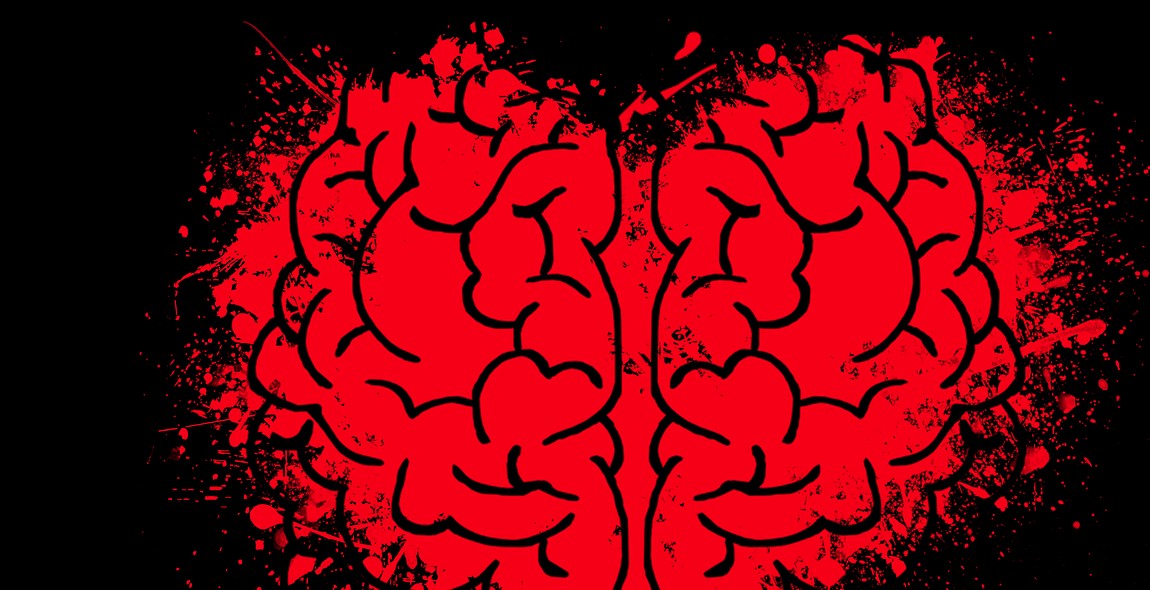Love and the Brain: How Neurochemistry Influences Romance
Love is a complex emotion that has puzzled people for centuries. It is a feeling that can be both exhilarating and terrifying, and one that has inspired countless songs, poems, and movies. But what exactly is love, and why do we feel it?
Scientists have been studying the neuroscience of love for decades, and the answers they have uncovered are fascinating. Love is not just an emotion – it is a chemical reaction in our brains that is influenced by a variety of factors, including genetics, hormones, and life experiences.
The Science of Love
At the heart of the neuroscience of love is the concept of neurochemistry – the study of the chemical processes that occur in the brain and nervous system. Neurochemistry plays a crucial role in how we experience emotions, including love.
When we fall in love, our brains release a cocktail of chemicals that create the intense feelings of attraction, desire, and attachment that we associate with being in love. These chemicals include dopamine, oxytocin, and serotonin, among others.
The Influence of Neurochemistry on Romance
The neurochemistry of love can have a profound influence on our romantic relationships. For example, the release of dopamine during the early stages of a relationship can create a sense of euphoria and excitement that is often referred to as the “honeymoon phase.”
Oxytocin, on the other hand, is known as the “cuddle hormone” because it is released during physical touch and can create feelings of bonding and attachment. This hormone is often associated with long-term relationships and can play a crucial role in maintaining feelings of love and connection over time.
Understanding the neurochemistry of love can help us to better understand our own emotions and behaviors in romantic relationships. By recognizing the influence of these chemicals on our feelings and actions, we can develop healthier, more fulfilling relationships and deepen our understanding of what it means to love and be loved.
The Science of Love: How Neurochemistry Influences Romance
Love is a complex emotion that has captivated humans for centuries. Scientists have long studied the brain to understand the neurochemistry behind romantic attraction and attachment. Recent research has helped shed light on what happens in the brain when we fall in love.
What Happens in the Brain?
When we experience romantic attraction, the brain releases a cocktail of chemicals that create intense feelings of pleasure and euphoria. These chemicals include dopamine, norepinephrine, and phenylethylamine, which are all associated with pleasure, motivation, and reward.
As we continue to bond with our partner, the brain releases oxytocin and vasopressin, which are hormones associated with bonding and attachment. These hormones help us form strong emotional connections with our partner and promote feelings of trust and security.
The Role of Neurotransmitters
Neurotransmitters are chemicals in the brain that help transmit signals between neurons. When we experience romantic attraction, the brain releases neurotransmitters like dopamine, norepinephrine, and serotonin. These chemicals are associated with pleasure, motivation, and mood regulation.
Dopamine, in particular, plays a crucial role in romantic attraction. It is responsible for the intense feelings of pleasure and reward that we experience when we are with our partner. Dopamine also helps reinforce the behavior that led to the pleasurable experience, which can strengthen our attachment to our partner.
The Importance of Hormones
Hormones like oxytocin and vasopressin play a crucial role in forming and maintaining strong emotional connections with our partner. Oxytocin is often referred to as the “love hormone” because it is released during intimate physical contact like hugging, kissing, and sex. It promotes feelings of trust, security, and emotional attachment.
Vasopressin, on the other hand, is associated with long-term commitment and monogamy. It helps promote bonding and attachment, and has been linked to behaviors like mate guarding and territoriality.
| Chemical | Function |
|---|---|
| Dopamine | Associated with pleasure, motivation, and reward |
| Norepinephrine | Associated with arousal and focus |
| Serotonin | Regulates mood and social behavior |
| Oxytocin | Promotes bonding, trust, and emotional attachment |
| Vasopressin | Associated with long-term commitment and monogamy |
In conclusion, the neurochemistry behind romantic attraction and attachment is complex and multifaceted. A variety of neurotransmitters and hormones work together to create intense feelings of pleasure, motivation, and emotional attachment. Understanding the science of love can help us better appreciate the complexity of this powerful emotion.
The Chemistry of Attraction
When it comes to love, the brain is one of the most important organs involved in the process. In fact, research has found that certain neurochemicals play a major role in attraction and romantic feelings. Here are three of the most important neurochemicals involved in the chemistry of attraction:
The Role of Dopamine
Dopamine is a neurotransmitter that plays a major role in reward-motivated behavior. It is involved in feelings of pleasure and satisfaction, and it is also responsible for our motivation to seek out pleasurable experiences. When we are attracted to someone, our brain releases dopamine, creating a rush of pleasure and excitement. This is why spending time with someone we are attracted to can feel so rewarding and addictive.
The Influence of Norepinephrine
Norepinephrine is another neurotransmitter that is involved in attraction and romantic feelings. It is responsible for the physiological symptoms of arousal, such as increased heart rate, sweating, and dilated pupils. Norepinephrine also plays a role in our ability to focus and pay attention, which is why we may feel a heightened sense of awareness and alertness when we are attracted to someone.
The Power of Serotonin
Serotonin is a neurotransmitter that is often associated with happiness and well-being. However, research has found that it also plays a role in attraction and romantic feelings. When we are attracted to someone, our brain releases serotonin, which can create feelings of happiness, contentment, and even obsession. This is why we may feel like we are on cloud nine when we are with someone we are attracted to.
Overall, the chemistry of attraction is a complex process that involves multiple neurochemicals and physiological responses. Understanding the role of dopamine, norepinephrine, and serotonin can help us better understand why we are attracted to certain people and why we may feel certain physiological and emotional responses when we are around them.
The Chemistry of Attachment
Attachment is a fundamental component of human relationships, and it is largely influenced by neurochemistry. Two of the most important chemicals involved in attachment are oxytocin and endorphins.
The Role of Oxytocin
Oxytocin, also known as the “love hormone,” is released during physical contact such as hugging, kissing, and sexual activity. It is also released during childbirth and breastfeeding, promoting maternal bonding. Oxytocin has been shown to increase trust, empathy, and social bonding, making it a crucial component of romantic attachment.
In a study published in the journal Psychoneuroendocrinology, researchers found that couples who reported higher levels of relationship satisfaction had higher levels of oxytocin in their blood.
However, oxytocin is not solely responsible for attachment. It interacts with other chemicals in the brain, such as dopamine and serotonin, to create a complex network of emotions and behaviors.
The Importance of Endorphins
Endorphins are a group of chemicals that are released during physical activity, such as exercise or sex. They are known for their ability to produce feelings of pleasure and reduce pain. In romantic relationships, endorphins are released during physical contact and can contribute to feelings of attachment and bonding.
Additionally, endorphins are involved in the reward system of the brain, which reinforces behaviors that lead to pleasure. This reinforces the positive feelings associated with romantic attachment and can lead to long-term commitment.
In a study published in the journal Social Cognitive and Affective Neuroscience, researchers found that individuals who reported higher levels of relationship satisfaction had higher levels of endorphins in their blood.
- In conclusion, oxytocin and endorphins play crucial roles in the chemistry of attachment.
- Oxytocin promotes social bonding and trust, while endorphins contribute to feelings of pleasure and reward.
- Together, these chemicals create a complex network of emotions and behaviors that contribute to romantic attachment and long-term commitment.

The Dark Side of Love
As much as love can bring joy and happiness, it can also have a dark side. The neurochemistry of love can influence negative emotions and behaviors, such as jealousy, possessiveness, and aggression.
The Influence of Cortisol
Cortisol is a hormone that is released in response to stress. In the early stages of a relationship, cortisol levels can rise due to the uncertainty and anxiety that come with the beginning of a new romance. However, if cortisol levels remain high over an extended period, it can lead to negative emotions and behaviors.
High cortisol levels can cause individuals to become overly possessive and jealous, leading to relationship conflicts and even breakups. It can also cause physical symptoms such as headaches, fatigue, and digestive issues.
The Role of Testosterone
Testosterone is a hormone associated with aggression and dominance. In the early stages of a relationship, testosterone levels tend to rise in both men and women, contributing to the passionate and intense feelings often associated with new love. However, as the relationship progresses, testosterone levels can decrease.
Low testosterone levels can lead to decreased libido and energy levels, contributing to relationship dissatisfaction and even depression. On the other hand, high testosterone levels can lead to aggression and dominate behavior, causing conflicts and potentially abusive situations.
- High cortisol levels can cause possessiveness and jealousy
- Low testosterone levels can lead to relationship dissatisfaction and depression
- High testosterone levels can lead to aggression and dominance
It is important to be aware of the potential negative effects that neurochemistry can have on love and relationships. Seeking professional help and practicing healthy communication and coping mechanisms can help mitigate these effects and promote a healthy and fulfilling romance.

Conclusion
Love is a complex emotion that is influenced by various factors, including neurochemistry. The brain releases several chemicals, including dopamine, oxytocin, and serotonin, that play a crucial role in fostering romantic relationships.
Understanding the influence of neurochemistry on love can help individuals build stronger and healthier relationships. For instance, individuals can engage in activities that boost the release of oxytocin, such as hugging, kissing, and spending quality time with their partners. Additionally, couples can engage in activities that increase dopamine levels, such as trying new things together or engaging in exciting activities.
It is essential to note that while neurochemistry plays a significant role in fostering romantic relationships, it is not the only factor. Other factors, such as communication, trust, and respect, also play a crucial role in building strong and healthy relationships.
As a love and relationships psychology guru, I have witnessed the power of understanding neurochemistry in fostering romantic relationships. By incorporating this knowledge into their relationships, individuals can build strong and lasting connections with their partners.
- Remember that love is a complex emotion that is influenced by various factors.
- Understanding the influence of neurochemistry on love can help individuals build stronger and healthier relationships.
- Engage in activities that boost the release of oxytocin and dopamine.
- Communication, trust, and respect also play a crucial role in building strong and healthy relationships.
| Chemical | Function in Love |
|---|---|
| Dopamine | Associated with pleasure and reward |
| Oxytocin | Associated with bonding and trust |
| Serotonin | Associated with mood and happiness |
